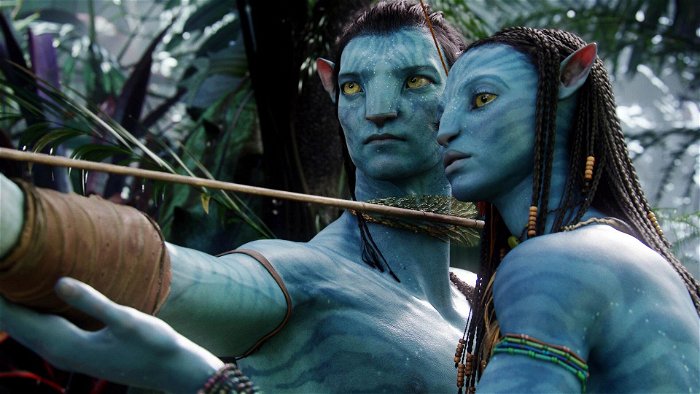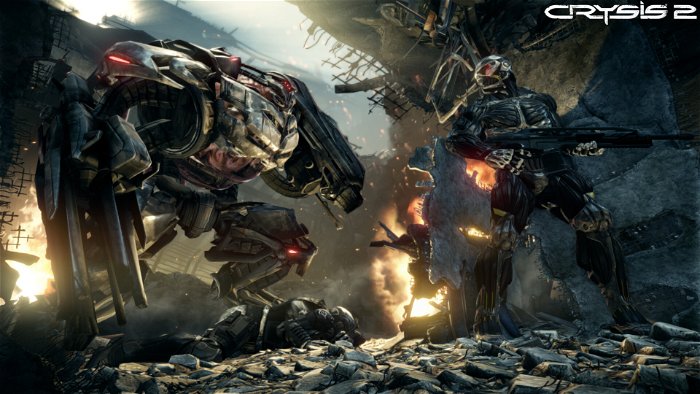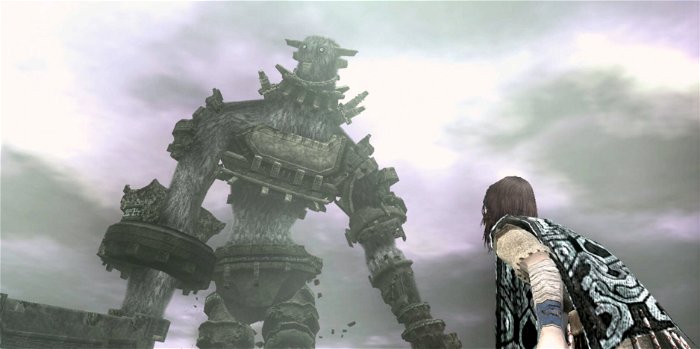We’ve come a long, long way from the Atari 2600 days, when you had to imagine that your green square was a hero and that the red square was a dragon. We still don’t have games that look as good—in real time—as the 2001 film, Final Fantasy: The Spirits Within, let alone as good as James Cameron’s Avatar movie, but the visual fidelity of games has risen considerably in the 30+ years since gaming became a mainstream, consumer-friendly hobby. Players are regularly exposed to some breathtaking moments in today’s games: dragons fly over sunny, alpine skies, and pristine space stations are full of aliens with wildly divergent evolutionary paths. Games have never looked better, but how much of that improvement is thanks to genuine artistic talent, and how much is merely due to ongoing technological advancements?

Pushing Polygons
The graphics of a game are like a witch’s brew of mystical ingredients, involving both technology and artistry. The graphics engine is what simulates (or outright distorts) reality, through an arcane process of interpreting ones and zeros into gorgeous visuals that approximate everything from the quality of light at sunset, to the behaviour of water as it floods through a ship’s deck. Nevertheless, technological simulation of the world has yet to near the bounds of human imagination.
3D games begin with technology. It is the foundation. Polygons are the “molecules” or basic building blocks from which characters, buildings and vehicles are built. Beyond that, nuances like color, lighting, and, perhaps most difficult of all, physics, convince players, even if only briefly, to forget the real world and lose themselves in the experience.
Crysis is currently hailed as the game with the best graphics, but how has it earned a ranking a step above its peers? From a technical perspective, it now sets the benchmark against-which PC users test their computers. Crysis 2 was so ambitious that it actually toned-down the excessive resource demands of the first game, enabling it to run at decent frame rates and resolutions, even without enormously expensive gaming rigs. So, where had its predecessor gone wrong?

Crysis takes place in a jungle. Its developer, Crytek took the high road by modeling plenty of plants and trees, by filling the air with insects flying about, and by simulating the behaviour of light falling through a jungle canopy and onto the objects on the ground. As if all that weren’t enough, the usual demands, like a smooth frame rate and the use of anti-aliasing to make objects appear smooth and not “jaggy,” are still in full force, while still maintaining a tremendously high resolution.
Combining these jobs into one could bring all but the best gaming systems to their knees. Crysis did many things it didn’t need to do, just to prove that they could be done. The result was a challenging release that, at first, few people could play at its highest graphical settings.
Crysis set new standards for handling light, physics, and numerous virtual objects. But despite notably achieving realistic lighting and environmental complexity, it still wasn’t necessarily the most beautiful-looking game.
Artists & Artistry
2006’s Okami, originally developed for the PS2, is one of the most visually arresting games of the last ten years, and not just because it rendered many photorealistic objects simultaneously. Director, Hideki Kamiya, and art director, Takeyasu Sawaki opted to create a surprising look based on traditional Japanese wood-cut, with ink and brush work. The result was a Japanese museum portrait come to life, all under the player’s command. Five years later, Sawaki again astounded critics and gamers alike with El Shaddai: Ascension of the Metatron. Without pushing the performance limits of current consoles, it shows players sights of worlds that they’d barely imagined possible.

This is where the “eye” of a talented artist rises to the fore of the technology available. Plenty of games do impressive things with technology, but the ability of on-screen images to evoke players’ emotions requires a human touch. Technology can make the creative process easier, but what ultimately defines the look of a game—and how memorable it is—are the choices made by the artists. Real-time lighting is great, but it’s the choice of light placement, the presence or absence of shadow, that makes the difference. Similarly, a color palette of millions of shades is useless if every color is randomly thrown on the screen just because it can be. The relentless greys and browns of Modern Warfare have a very different effect compared to the rich greens of the jungles in the Uncharted series, although even a lack of color can do well in the right hands.
Limbo, by the Danish studio, Playdead is a bold attempt at storytelling through silhouettes and a black-and-white aesthetic similar to silent films. Carefully using simple shapes blended with light and dark shades, Limbo creates an evocative look that incites genuine emotions. The first time a giant spider comes crawling towards the game’s defenceless protagonist, players’ reactions are both real and immediate. The artists’ choices in defining the look of the game carry emotional power. Another good example of a simple game that rises above its technological limitations is Sword & Sworcery EP, by Canadian developer Superbrothers. Taking a deliberate, retro look, it creates moody, austere environments that look striking and detailed, while at the same time using the most rudimentary form of graphical rendering, the humble pixel.
This is the other extreme of the pendulum. While these games are all visually stunning, their technological simplicity is another characteristic they have in common. Games like Crysis can strain any system while still lacking impressive art direction. However, many games do successfully tread the delicate middle ground.

The Balance
When powerful tools are married to high calibre talent, the results can reach into the realm of the deeply moving. A few big-budget games that enjoy the support of prestigious publishers occasionally achieve lofty heights with their art direction. The artistic team first works at the concept stage, making constant refinements in response to continual feedback, to gradually hone the final look of each character and every environment. Massive budgets give teams of artists the luxury of time, allowing them years to obsessively tweak the little details like lighting, the setting of a scene, or the particular angle of a jaw.
In the highly cinematic Heavy Rain, the filmic sensibility of director David Cage is expressed with the help of extensive motion capture sessions funded by Sony’s deep pockets. Its look is both realistic and startlingly evocative. Lit to echo its film noire inspiration, the game demonstrates an excessive—perhaps even obsessive—attention to detail in the little adornments within the environment, from the posters on the wall, to the knickknacks on the shelves, to the accessories on a bedside table. Designer Quantic Dream’s carefully crafted and convincing vision was fuelled not just by Sony’s finances, but also by the freedom Sony gave these talented French artists. Allowing them the time needed to ensure that every environment met exacting quality-control demands, set a new standard for cinematic aesthetics in games.
The Assassin’s Creed series, most notably, Assassin’s Creed 2, is another aesthetically and technically impressive example. Ubisoft Montreal moved the game to Renaissance, Italy, resulting in a sprawling sense of scale and a distinct time and place. The mood of the game’s sunsets is almost poetic. The talented teams behind such sterling results needed the money Ubisoft threw at them for research trips and for the-top tier hardware and software used to replicate not one, not two, but four Italian cities. Assassin’s Creed 2 gives us a vast world rivalling an open-world game, while still delivering the details and stable performance of a game with far fewer, not to mention less-ambitious, areas of real estate to render.

Through the years, others like Uncharted 2 or even the last-generation critical behemoth, Shadow of the Colossus have shown us what a good team with the right technological resources can accomplish. But this kind of achievement is still too rare. Games are meant to be more than just sheer processing power on display; they should make a meaningful impact on players. Better tools can mean a better product, but only if artists can wield those tools well in the service of stylish subject matter. Every once in a while something different, like El Shaddai’s psychedelic levels, emerges to remind players that photorealism isn’t the final arbiter of good looks in gaming. The best end results avoid the pitfall of looking painfully overproduced and show us what can happen when financing facilitates the ideal union between talent and technology.




